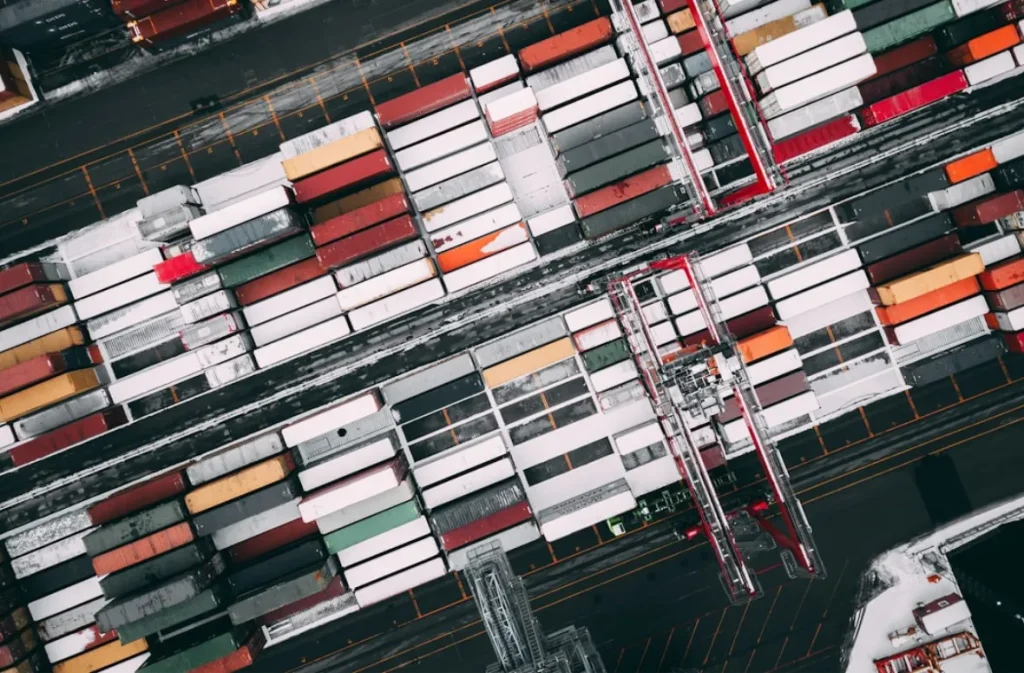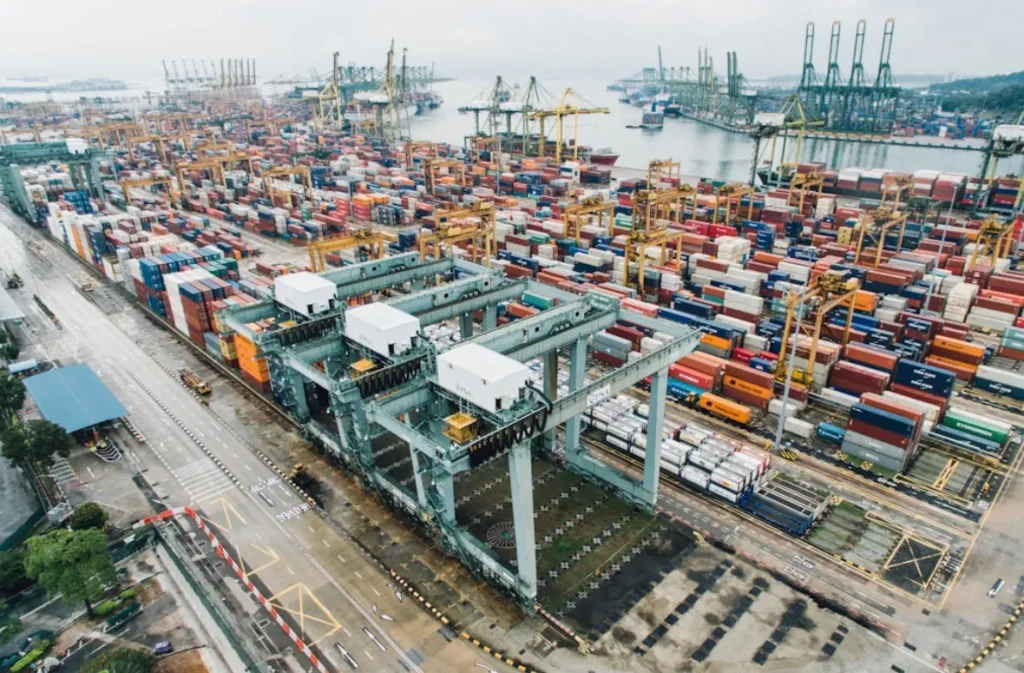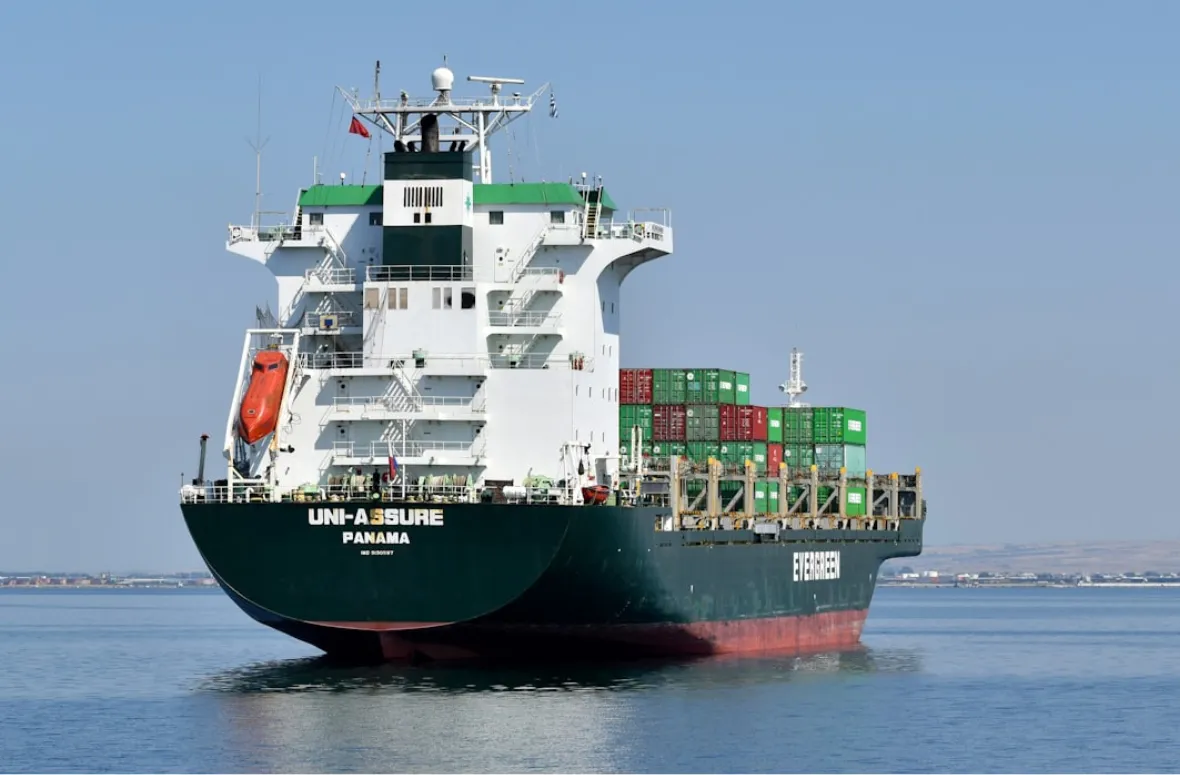The evolution of cargo handling in ports is witnessing a transformative shift with the integration of hydrogen fuel cell technology used to move containers efficiently.
As industries seek sustainable alternatives to traditional diesel-powered equipment, hydrogen fuel cells emerge as a viable solution, promising efficiency and zero emissions.
This article explores the significance of hydrogen fuel cells in modern cargo handling, focusing on their impact on ports, terminal operators, and the broader shipping industry as a means of reducing port emissions.
Introduction to Hydrogen Fuel Cells in Ports
Hydrogen fuel cells (HFCs) represent a groundbreaking approach to powering various battery-electric equipment types within ports.
By converting hydrogen fuel into electricity, these cells significantly reduce reliance on fossil fuels and lower emissions in the cargo handling sector.
The urgency for greener alternatives has prompted many terminals, including the Port of Los Angeles and Long Beach, to explore hydrogen-powered solutions as part of their electrification strategies.
What are Hydrogen Fuel Cells?
Hydrogen fuel cells are electrochemical devices that generate electricity through a reaction between hydrogen and oxygen, producing only water vapor as a byproduct.
This technology is gaining traction among container handlers and port operators due to its ability to provide consistent power without the drawbacks associated with battery electric systems.
As the industry moves towards a more sustainable future, hydrogen fuel cells are emerging as a crucial component in electrifying high-capacity, heavy-duty equipment such as cranes and forklifts.
The Importance of Fuel Cell Technology in Cargo Handling

Fuel cell technology plays a vital role in enhancing the efficiency of cargo handling operations while ensuring that electric vehicles do not need to be recharged frequently.
With the increasing container traffic in ports, the need for reliable and robust electric equipment becomes paramount, especially in readiness for future demands. Hydrogen-powered vehicles and equipment offer a more extended operational range than battery-electric alternatives and minimize downtime by allowing rapid refueling.
This capability is essential for maintaining productivity in busy terminals where every moment counts for beneficial cargo owners needing to stack containers efficiently.
Overview of Current Innovations in Hydrogen Fuel
Recent innovations in hydrogen fuel technology are revolutionizing the container handling industry. Significant advancements have been made in developing hydrogen RTG cranes and other heavy equipment, now deployed across multiple terminals.
These innovations not only enhance the efficiency of operations but also significantly reduce the total cost of ownership for container terminal operators.
As ports adopt hydrogen-powered solutions, the shipping industry can expect a substantial shift towards sustainable practices by 2030, including using advanced powertrains.
Also Read: Differentiate Between Exponential and Logistic Growth: Academy
Equipment for container handling that uses hydrogen fuel cell technology
Hydrating hydrogen fuel cell technology into container handling equipment marks a significant leap towards achieving zero emissions in ports. Equipment types, such as hydrogen RTG cranes, forklifts, and gantry systems, are becoming increasingly prevalent in terminals aiming for sustainability.
By utilizing fuel cell electric systems, ports like the Port of Los Angeles and Long Beach are setting new benchmarks in operational efficiency while significantly reducing their carbon footprints. This transition not only serves environmental goals but also caters to the needs of beneficial cargo owners who are increasingly prioritizing sustainable practices.
Types of Container Handler Equipment Utilizing Fuel Cells
Various types of container handling equipment are now incorporating hydrogen fuel cells to enhance their operational capabilities and reduce refueling time.
Hydrogen-powered forklifts stand out for their agility and efficiency in tight spaces. At the same time, hydrogen RTG cranes are engineered for heavy-duty lifting tasks, contributing to zero-emission goals.
These vehicles and equipment leverage the power of hydrogen fuel to ensure uninterrupted service, allowing for quick refueling compared to traditional diesel systems.
Fuel cell technology’s versatility enables operators to manage container traffic more effectively, thus optimizing cargo handling operations across multiple terminals.
Benefits of Hydrogen-Powered Equipment in Terminals

Hydrogen-powered equipment offers numerous benefits for terminals striving to improve their operations. Firstly, hydrogen fuel cells provide a more extended operational range than battery electric systems, which often require extended recharge times for their powertrains.
This aspect directly translates to increased productivity, as equipment can be refueled rapidly, minimizing downtime. Additionally, adopting hydrogen fuel significantly reduces port emissions, aligning with global initiatives to combat climate change.
By electrifying their fleets with hydrogen-powered solutions, ports enhance their reputation as environmentally responsible entities while lowering the total cost of ownership in the long run.
Case Studies of Successful Implementations
Several case studies illustrate the successful implementation of hydrogen fuel cell technology (FCEV) in the container handling industry, showcasing its benefits.
For instance, the Port of Los Angeles has initiated pilot projects featuring hydrogen-powered RTG cranes, demonstrating significant improvements in efficiency and emissions reduction.
Similarly, the Port of Long Beach has embraced hydrogen fuel cells in its fleet of electric vehicles, showcasing the practical benefits of this technology in real-world operations.
These implementations highlight the viability of hydrogen fuel as a power source and set a precedent for other ports looking to electrify their operations by 2030, particularly in container terminals.
The Role of Hydrogen in Gantry Operations
Overview of Gantry Systems in Ports
Gantry systems are integral to efficient cargo handling in ports, serving as crucial equipment for loading and unloading shipping containers. These systems, often referred to as RTG cranes, also known as container cranes, facilitate the movement of heavy cargo between ships and terminals, enhancing the need for electric vehicles.
Using advanced technologies, gantry operations ensure seamless container traffic flows, thus optimizing terminal productivity and reducing turnaround times. As ports evolve, integrating hydrogen fuel cells into gantry systems becomes increasingly significant in achieving sustainability goals.
Integrating Hydrogen Fuel Cells into Gantry Equipment
Integrating hydrogen fuel cells into gantry equipment represents a paradigm shift in how ports approach cargo handling, paving the way for a zero-emission future.
These fuel cell electric systems provide a clean and efficient power source, allowing rubber-tired gantry cranes to operate with zero emissions.
By replacing traditional diesel engines with hydrogen-powered alternatives, ports can significantly reduce their carbon footprints while enhancing the overall performance of container handling equipment.
This transition aligns with global sustainability initiatives and meets the demands of beneficial cargo owners seeking greener solutions in transportation decarbonization.
Challenges and Solutions for Operators
While adopting hydrogen fuel cells in gantry operations presents numerous advantages, it has challenges. Operators must navigate issues such as infrastructure development for hydrogen refueling and the initial investment costs associated with transitioning to hydrogen-powered equipment.
However, strategic partnerships within the industry can facilitate the necessary support systems for hydrogen infrastructure. By addressing these challenges head-on, operators can fully leverage the benefits of hydrogen fuel cells, ensuring efficient and sustainable cargo handling operations.
Future of Cargo Handling with Hydrogen Fuel

Predicted Trends in Hydrogen Fuel Adoption
The future of cargo handling is poised for significant transformation with the predicted rise in hydrogen fuel adoption. As more ports implement hydrogen fuel cell technology, we expect a shift in industry standards towards zero-emissions operations.
By 2030, it is anticipated that hydrogen-powered equipment, including gantry cranes and high-capacity forklifts, will become commonplace in terminals.
This trend underscores the commitment of the shipping industry to enhance sustainability while maintaining the efficiency required to manage increasing freight container traffic.
Environmental Impact and Sustainability Goals
The environmental impact of transitioning to hydrogen fuel in cargo handling is profound, as it directly contributes to achieving sustainability goals and reducing port emissions.
Eliminating diesel emissions from port operations improves air quality and aligns with global efforts to combat climate change through cleaner electric power sources.
Ports that adopt hydrogen-powered solutions are benchmarks for sustainability in the maritime sector, benefiting the environment and the local communities that depend on clean air and reduced pollution levels.
Collaborations and Partnerships in the Industry
Collaborations and partnerships within the shipping and logistics industry are essential for advancing hydrogen fuel technology in cargo handling and ensuring readiness for the transition away from diesel.
By joining forces, stakeholders can share insights, resources, and innovations to create robust hydrogen infrastructure necessary for transportation decarbonization and the advancement of engine technology.
These partnerships enhance the development of strategic initiatives that promote green hydrogen, ensuring that ports can efficiently electrify their fleets and meet the growing demands of global trade while prioritizing environmental stewardship.

